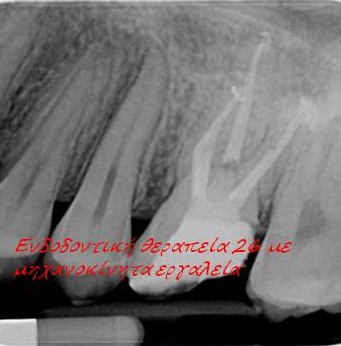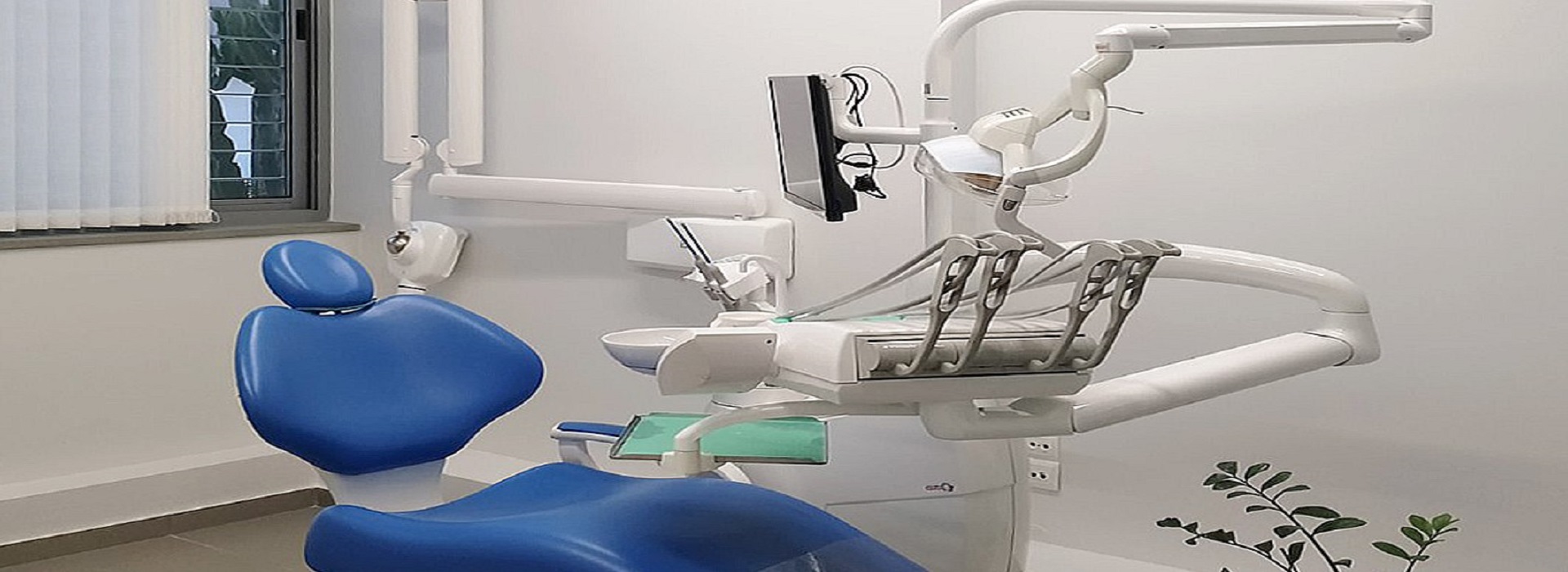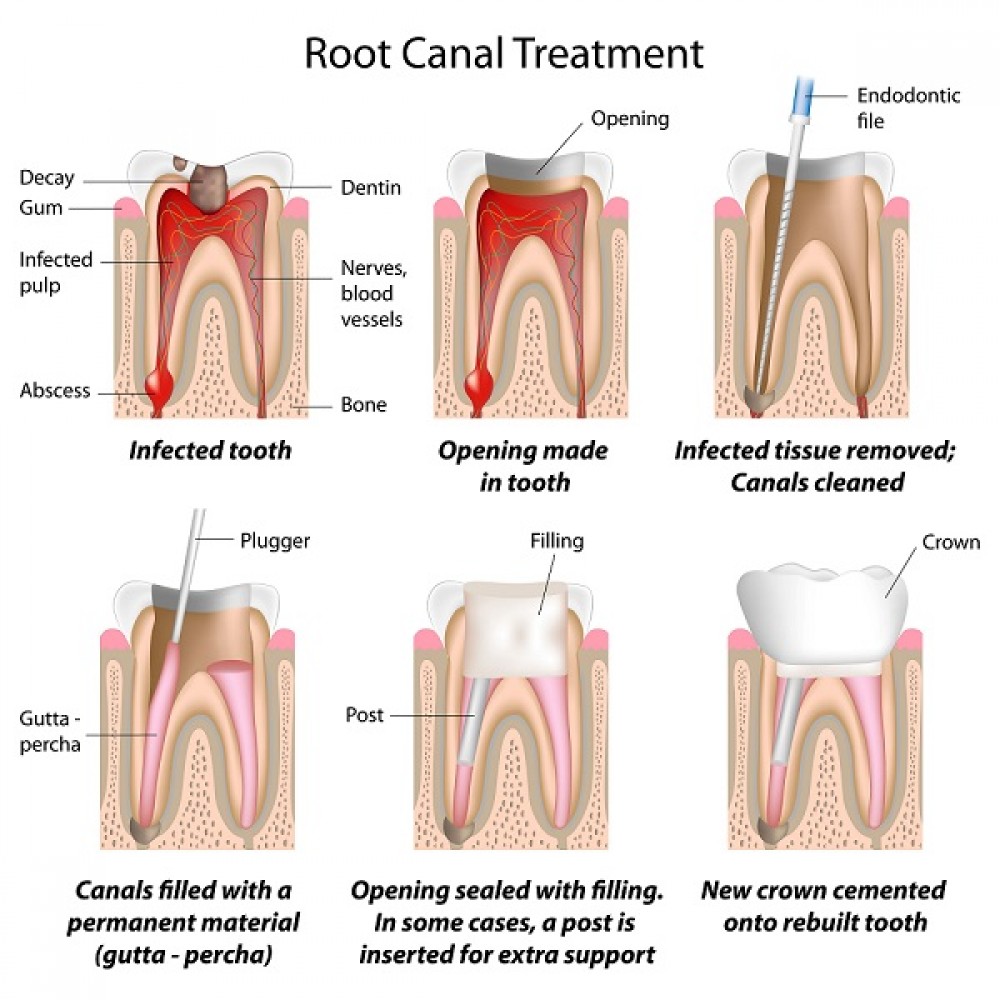The endodontic treatment (commonly known as a root canal) is a dental practice which is performed in order to keep a tooth on the patient’s dentition and to avoid an extraction.
It can be a therapeutic action in cases where a tooth injury has occurred and has lead to pulpitis (inflammation) or to the revealing of the pulp (nerve) or gangrene. It may be a necessary action in cases where it is necessary to grind a tooth to a large extent, in order to become a part of a prosthetic restoration (“bridge”). The endodontic treatment is also considered necessary in the case of destruction of the tooth crown by extensive caries which has reached its pulp. Treatment is performed either in a session when the pulp is not infected or in consecutive one, depending on the severity of the case.
How Is the Endodontic Treatment Performed?
After the dentist has clinically and radiographically examined the patient and diagnoses that they need an endodontic treatment, they proceed to the isolation of the affected tooth and to open it using local anesthesia. This is followed by the identification of the root canals. Their length is calculated. Then, what follows is a chemomechanical treatment with special microtools, and when the inflammation is resolved and the tooth has been cleaned, the root canals are filled with the appropriate pastes. Over a period of time, where the tooth has not presented any symptoms, we are proceeding with the final restoration (filling) or repair with a resin or crown coating.
CONSEQUENCES - FINAL RESTORATION
The likelihood of a tooth breaking increases after a (significant) period of time. In order to avoid this condition, the endodontically treated tooth is recommended to be preventively covered with a crown (“casa”) or with a composite resin onlay. In case the treatment fails, what is recommended by the treating dentist is its repetition, or in very persistent bone infections which do not subside, surgical apicoectomy and the reverse restoration.
APICOECTOMY
The apicoectomy is a simple endodontic surgery involving the surgical removal of the root end (apex) of a tooth, the removal of the surrounding inflamed tissues and the sealing of the remaining part of the root with a reverse restoration. It is performed under local anesthesia and, at the end of the procedure, sutures are placed. The patient enters a follow-up checking programme by the attending dentist.
For more information click the link: https://www.chatzogianni.gr/gr/endodontia-album


